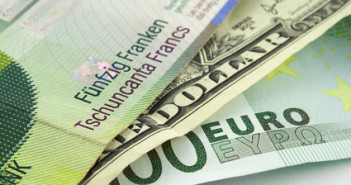The big winner this week was the US Dollar, with the Dollar Index (which tracks USD activity against a basket of major currencies) trading up towards multi-month highs following Wednesday’s Federal Reserve (Fed) activity. This week saw Ben Bernanke’s last appearance at chairman before his successor, current vice-chair Janet Yellen, takes over. As widely expected, his last act was to cull another USD-10bn from the Fed’s Quantitative Easing program.
However markets were caught slightly off guard by a rare instance of unanimous agreement by the voting members of the board to enact the cut. As well markets took exception to a declaration in the policy statement which alleged that “if incoming information broadly supports the Committee’s expectation of ongoing improvement in labor market conditions and inflation moving back toward its longer-run objective, the Committee will likely reduce the pace of asset purchases in further measured steps at future meetingsâ€.
What a difference a week makes, currency market’s preoccupation with the USD took a big bite out of the Euro this week. EUR$ declined over 1.0% this week, erasing almost all of last week’s gains as the pair closes in on multi-moth lows. The activity this week erases the bullish sentiment being felt in the common currency last week.
Off of charts this pair has slid almost 400-pips since multi-year highs were established in December in the upper 1.38 handle, presenting buyers with a degree of reprieve. There looks to be the early stages of a technical down-trend starting to develop in EUR$ (lower highs and lower lows), which could be confirmed if trading activity leads the pair meaningfully below historical levels at 1.3500. If confirmed, it would increase the possibility of future declines into the lower 1.30’s.
The Euro’s troubles were not limited to the USD this week, GBPEUR is in the black this week as cross trading from EUR$ and encouraging UK GDP numbers supported the Sterling. The pair is looking comfortable in a 7-big figure rally established back in early August, and is hovering just shy of annual highs in the mid-1.22 handle.
The contrasting economies of the UK & Eurozone remain the primary driver of action in this pair and currently favor the Sterling. However the Bank of England (BoE) backing away from its forward guidance of 7.0% unemployment as a threshold for interest rate hikes is a short term tail risk, and cannot be ignored.
While Sterling outperformed the Euro this week, like the common currency, it fell prey to an aggressive Greenback. Cable edged lower this week bringing the pull-back from last week’s multi-year high to about 200-pips. On top of taper related USD optimism, fallout from BoE Governor Mark Carney’s comments at last week’s World Economic Forum weighed on the pair this week.
The central banker appeared to unofficially back away from his flagship policy of forward guidance, leading analysts to speculate that next week’s BoE activity may see official comments of a similar nature. The fresh round of tapering and dovish BoE sentiment puts a negative bias on the Sterling despite recent constructive economic data. This in turn could clip the Cable’s wings and see the pair stabilize in the mid-1.60’s.
The First week of February is an exciting one, with potentially market moving data every day, building towards an apex late in the week. BoE & European Central Bank (ECB) activity Thursday and then American Non-Farms Payrolls (NFP) on Friday are the headline events next week and present plenty of opportunity for volatility in currency markets—Speak to your Cambridge Mercantile hedging specialist do discuss ways that you can manage any associated exposure.
Both the BoE and ECB are expected to hold steady on loose monetary policy next week, in both circumstances however interest will be focused on the wording of any related policy statements. With respects to the ECB, given recent record unemployment and deflationary concerns, markets will be on the lookout for references to a “prolonged period of low inflationâ€, which could imply low interest rates in the Eurozone for the foreseeable future.
As far as the BoE is concerned markets will be watching for follow up to Carney’s previous comments in Davos. Any official retreat from forward guidance is likely to weigh on the Sterling. Turning to Friday’s NFP, expectations according to a survey of economists done by Reuters, are for a result of 185k. Following last month’s disappointing 74k, versus 203k & 204k in the month’s preceding, markets will be hoping for a significant rebound to validate this week’s tapering activity.
See all the events in the Forex weekly outlook.



